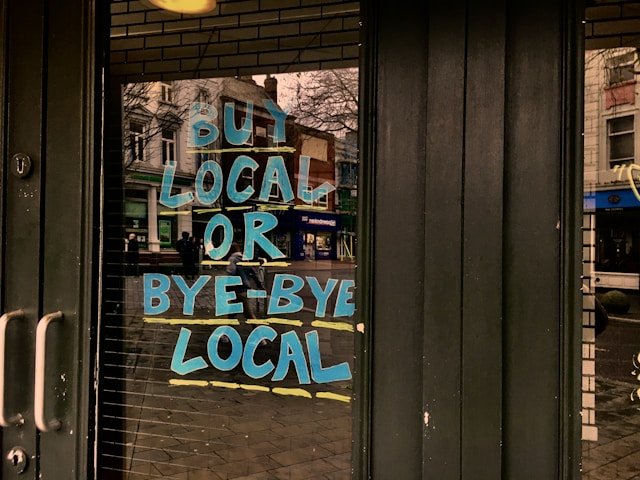Introduction
“Near me” searches are exploding—and they convert. Google reports that 76% of people who search for something nearby on a smartphone visit a business within a day, and 28% of those searches lead to a purchase. That’s not just traffic; that’s foot traffic and revenue.
Yet many great local businesses remain invisible online. The fix isn’t a mystery ad hack—it’s understanding and improving the local SEO signals that tell Google you’re a trusted, relevant option for searchers close to you. This guide breaks those signals into clear, actionable steps you can put to work today.
Ready to outrank nearby competitors? Let’s build your 90‑day local growth plan.

What Are Local SEO Signals, Exactly?
In simple terms, local SEO signals are the pieces of information search engines like Google collect to verify your business’s physical location, relevance, and prominence within a specific geographic area. Think of them as trust votes you’re sending to Google, proving you’re a legitimate and relevant local entity.
While traditional SEO focuses on broad authority, local SEO adds a critical layer: geoproximity. It’s the reason a search for “coffee shop” shows you places you can walk to, not a famous cafe across the country. The ultimate prize for mastering these signals is a coveted spot in Google’s Local Pack (also known as the “Map Pack”)—the block of three business listings that appear at the top of the search results with a map. Getting here is like putting your business on the digital main street.
The Core Pillars: Top Local SEO Signals to Master in 2025
To get found by local customers, you need to send the right signals. Let’s break down the most critical factors into a simple checklist you can start using today.
1. Google Business Profile (GBP) Signals
Your Google Business Profile (formerly Google My Business) is the single most important element for Google Maps ranking. It is the bedrock of your local online presence. A poorly optimized profile is like a locked front door; a fully optimized one is a welcoming entrance with a giant, flashing “OPEN” sign.
Here’s how to optimize it:
- Profile Completeness: Fill out every single section of your profile. This includes services, products, accessibility information, health and safety attributes, and more. A 100% complete profile is a massive trust signal.
- Primary & Secondary Categories: Your primary category is vital. Choose the most specific category that represents your core business (e.g., “Pizza Restaurant” instead of just “Restaurant”). Then, use secondary categories for everything else you offer (e.g., “Italian Restaurant,” “Catering”).
- High-Quality Photos: Customers want to see your business. Regularly upload clear, high-quality photos of your storefront, interior, products, and team. Pro-tip: Geotagging your photos by ensuring location services are on when you take them can add another small, positive signal.
- Google Posts: Use the “Posts” feature to share updates, promotions, events, and new products. These posts appear directly on your profile and show Google that your business is active.
- Q&A Section: Don’t wait for customers to ask questions. Proactively populate the Q&A section by asking and answering your most common questions. This helps you control the narrative and provide valuable information instantly.
2. On-Page Website Signals
Your website is the other half of the equation. Google cross-references your GBP with your website to ensure the information is consistent and trustworthy. These are the local search ranking factors you control directly on your site.
- NAP Consistency: Your Name, Address, and Phone number (NAP) must be displayed clearly and consistently on your website, ideally in the footer of every page and on a dedicated “Contact Us” page. It must be an exact match to your GBP listing.
- Title Tags and Meta Descriptions: Optimize the title tags and meta descriptions of your key pages (especially your homepage) to include your primary service and location. For example, a title tag could be:
Expert Plumbing & Drain Cleaning in Michiana | Your Local Plumber. - Location-Specific Pages: If you have multiple physical locations, don’t just list them on one page. Create a unique, optimized landing page for each location. This page should feature the specific location’s NAP, hours, unique photos, and customer testimonials.
- Local Business Schema: This sounds technical, but it’s simple in concept. Schema markup is a piece of code you add to your website’s backend that explicitly labels your business information for search engines. (Pro-tip: Use LocalBusiness Schema.org markup to spoon-feed this data to Google.) This removes all guesswork for search crawlers.
3. Local Citation & Link Signals
A local citation is any online mention of your business’s NAP on another website. Think of directories like Yelp, Yellow Pages, TripAdvisor, and industry-specific sites. Inbound links from other local entities are also powerful signals.
- Citation Consistency is King: The most crucial factor here is unwavering NAP consistency. If one directory lists your business as “Main St.” and another lists it as “Main Street,” this inconsistency can confuse search engines and dilute your authority.
- Quality and Relevance: Focus on getting citations from well-respected, relevant directories. A listing in your local Chamber of Commerce directory is far more valuable than a listing in an obscure, spammy directory.
- Local Link Building: Earning backlinks from other reputable local businesses, news outlets, or community blogs is a huge vote of confidence. Sponsor a local event, partner with a neighboring business, or join a local business association to create these valuable linking opportunities.
4. Online Review Signals
Online reviews are a cornerstone of modern local SEO for small business. They serve a dual purpose: they heavily influence your search ranking and directly impact a customer’s decision to choose you. Google trusts what your customers have to say about you.
Focus on the “3 Q’s of Reviews”:
- Quantity: You need a steady stream of new reviews. A profile with 50 recent reviews is more powerful than one with 100 reviews from three years ago.
- Quality: The overall star rating is an obvious and powerful ranking factor. Higher ratings lead to better visibility.
- Queried Keywords: When customers naturally mention your services or products in their reviews (e.g., “the best emergency plumbing service in town”), it reinforces your relevance for those search terms.
Most importantly, respond to every review. Thanking customers for positive feedback and professionally addressing concerns in negative reviews shows both customers and Google that you are an engaged and caring business owner.
5. User Engagement Signals
These signals are all about how searchers interact with your business listing once they find it. High engagement tells Google that your listing is helpful and relevant, which in turn boosts its ranking.
Key user engagement signals include:
- Click-Through Rate (CTR): The percentage of people who see your listing and actually click on it.
- Clicks-to-Call: The number of users who click the “Call” button directly from your GBP listing.
- Requests for Driving Directions: A very strong signal that indicates purchase intent.
- Time Spent on Website (Dwell Time): If users click through to your website and stay for a while, it signals that your content is valuable.
To improve local SEO through engagement, you need a compelling GBP profile (great photos, excellent reviews, useful posts) that makes users want to click, call, and visit.

Your Action Plan: How to Start Improving Your Local SEO Today
Feeling overwhelmed? Don’t be. You can make a significant impact by focusing on the most important tasks first. Here is a simple, 3-step action plan.
- Audit & Optimize Your GBP: Your Google Business Profile is your lowest-hanging fruit and offers the biggest return on your time. Go through the checklist in Pillar #1 and ensure every single field is filled out accurately and completely. This is your top priority.
- Clean Up Your Citations: Use a tool like Moz Local or BrightLocal, or simply do some manual Google searches, to find your most important business listings. Check them for NAP consistency and correct any errors you find.
- Implement a Review Strategy: Don’t just hope for reviews—ask for them! Create a simple process. Send a follow-up email or text message to satisfied customers with a direct link to your GBP review section. Make it as easy as possible for them to share their positive experience.
Conclusion
Local SEO is not a one-time fix; it’s an ongoing commitment to building digital trust and relevance in your community. By systematically sending the right local SEO signals—through your Google Business Profile, your website, your citations, and your customer reviews—you are creating a powerful digital footprint.
The benefits go far beyond a better ranking. You’ll achieve higher visibility on Google Search and Maps, drive more qualified foot traffic to your location, and gain a significant competitive edge. Stop letting your competitors steal the spotlight. Take control of your local SEO signals today and turn online searches into loyal customers.
Frequently Asked Questions (FAQ)
Q1: How long does it take to see results from local SEO?
A: Local SEO is a marathon, not a sprint. While some changes, like optimizing your Google Business Profile, can yield results in a few weeks, a comprehensive strategy can take 3-6 months to show significant ranking improvements. Factors like your industry, location, and competition level play a big role. Consistency is key.
Q2: Do I need a physical storefront to benefit from local SEO?
A: Absolutely not. Service-area businesses (SABs) like plumbers, electricians, landscapers, and consultants can benefit immensely from local SEO. When setting up your Google Business Profile, you can hide your physical address and define a specific service area. This will make your business appear in the Local Pack for searches in the towns and cities you serve.
Q3: What’s the most important local SEO signal to focus on first?
A: Without a doubt, your Google Business Profile optimization is the most critical starting point. It’s the hub for nearly all other local signals and provides the most direct and impactful way to improve your visibility in the Google Local Pack and on Google Maps. Start there before anything else.
WRAPPING UP: Turn Local SEO Signals into Real Customers
You’ve seen how local SEO signals—from Google Business Profile optimization to reviews and citations—drive real-world visits and calls. If you’re ready to accelerate results, partner with Next Level Pixels for a focused, done-for-you plan that lifts your Google Maps visibility, improves on-page relevance, and builds sustainable local authority.
Services
1) Local SEO & GBP Optimization
Complete Google Business Profile setup and enhancement, NAP cleanup, citation management, and a steady review program—built to boost your Google Maps ranking and Local Pack visibility.
2) Website Design & Conversion
Fast, mobile-first websites with clear CTAs, localized content, and LocalBusiness Schema to “spoon‑feed” search engines the right signals—so more clicks become calls and bookings.
See options: https://nextlevelpixels.com/websites/
3) Google & Social Ads Management
Fill demand while your organic rankings climb. We build and manage high-intent campaigns that target local buyers searching for services “near me.”
View services: https://nextlevelpixels.com/digital-ads/
4) Branding & Creative
Memorable logos, on-brand graphics, and content that supports trust, clicks, and in‑store visits—your identity, built for local impact.
Explore branding: https://nextlevelpixels.com/logo-design/
5) Full‑Stack Marketing Support
From SEO and websites to email, SMS, and content creation—get a cohesive strategy and execution under one roof, tailored to your market.
Browse all services: https://nextlevelpixels.com/services/
Helpful Resources
- Best Google Business Profile Metrics to Boost Your Local SEO:
https://blog.nextlevelpixels.com/google-business-profile-metrics-seo/ - How to Track & Boost Local SEO Rankings:
https://blog.nextlevelpixels.com/track-and-boost-your-local-seo-rankings/
Ready to outrank nearby competitors? Let’s build your 90‑day local growth plan.
